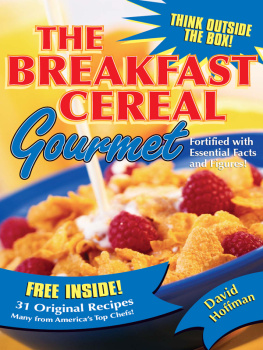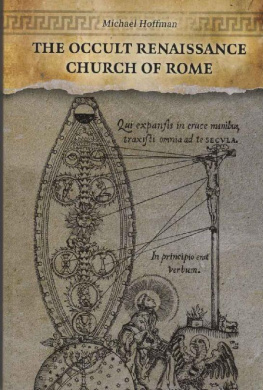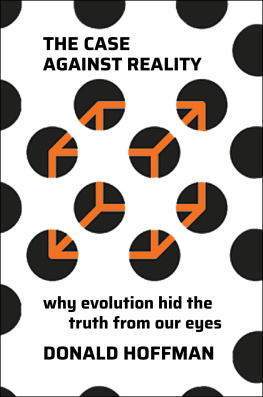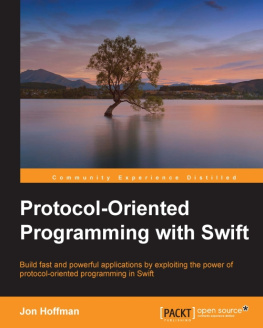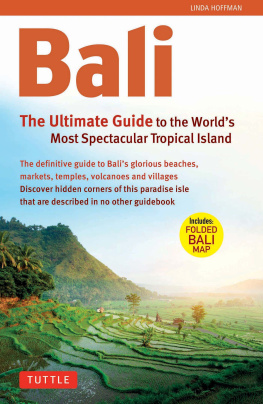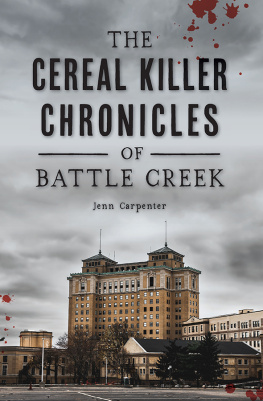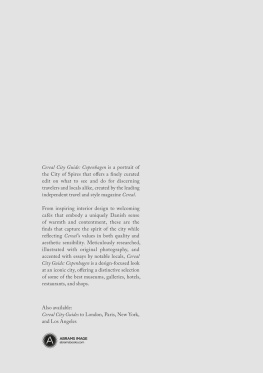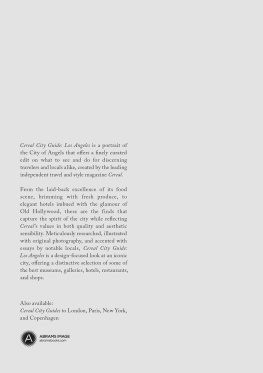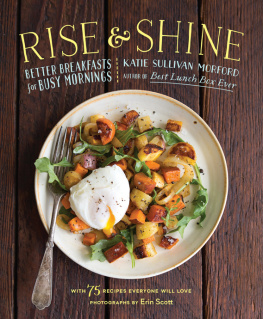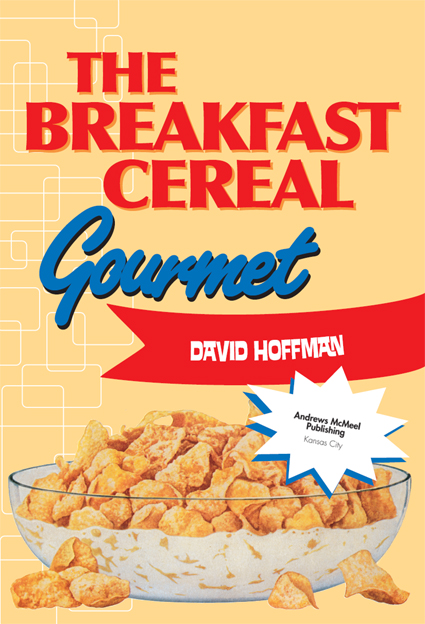

The Breakfast Cereal Gourmet copyright 2005 by David Hoffman. All rights reserved. No part of this book may be used or reproduced in any manner whatsoever without written permission except in the case of reprints in the context of reviews. For information, write Andrews McMeel Publishing, an Andrews McMeel Universal company, 1130 Walnut Street, Kansas City, Missouri 64106.
Library of Congress Cataloging-in Publication Data
www.andrewsmcmeel.com
Hoffman, David, 1953
The breakfast cereal gourmet / David Hoffman.
p. cm.
E-ISBN 978-0-7407-8625-9
1. Cookery (Cereal) 2. Cookery, American. 3. Cereals, PreparedMiscellanea. I. Title.
TX808.H64 2005
641.631dc22
2004062721
Cover design by Tim Lynch
Book design and composition by Holly Camerlinck
Attention: Schools and Businesses
Andrews McMeel books are available at quantity discounts with bulk purchase for educational, business, or sales promotional use. For information, please write to: Special Sales Department, Andrews McMeel Publishing, 1130 Walnut Street, Kansas City, Missouri 64106.
CONTENTS
INTRODUCTION
In 1997 I received a phone call from a software company who, riding high on the success of a smart, hip, best-selling CD-ROM, wanted to know if I was availableand interestedin helping them to develop their next big thing. To be truthful, the offer surprised me. Id spent the bulk of my career writing books and scripts and working as a television reporter, none of which had particularly prepared me for a ride on the information superhighway. But two weeks later I found myself in their offices, a forty-three-year-old surrounded by a sea of twenty-something Alpha Geeks, Stress Puppies, and Ivy Leagueeducated dot-commers, whose conversations were peppered with buzzwords like applications, shareware, and system requirements. It is an image that, through the years, stayed with me. Funny thing is, the memory has nothing to do with anything that came out of their mouths during those five daysand everything to do with what went into them.
Cereal.
Lots and lots of brightly colored, sugarcoated breakfast cereal. So much cereal, in fact, that the office kitchen was stocked with nothing but. Were talking Cinnamon Toast Crunch, Cocoa Puffs, Cocoa Krispies, Cookie Crisp, Quisp, Froot Loops, Fruity Pebbles, Frosted Flakes and that was just the top shelf.
Shortly thereafter I read about an engaged couple in San Francisco who had picked out a pair of $200 Waterford dishes and listed them on their wedding gift registry as His and Hers Cereal Bowls. On a trip to New York, I discovered that at his shop under the Brooklyn Bridge (and now at his Chocolate Haven in lower Manhattan), Food Network personality (and former Le Cirque pastry chef) Jacque Torres was offering Chocolate-Covered Corn Flakes at $20 per pound (a side note: theyre amazing). And then I heard that Arizona State University in Tempe was home to Cereality, the first in a proposed nationwide chain of cereal bars (think Starbucks meets Ben & Jerrys) where the menu features a choice of 33 name brands, 34 toppings, and 8 different milksprepared and served by a staff who are dressed in their pajamas.
Suddenly, everywhere I turned, cold cereal was hot.
As a baby boomer, I understood the appeal. After all, cereal is comfort foodranking up there with meat loaf or macaroni and cheese. It is also retro nostalgia, a reminder of Howdy Doody, Soupy Sales, and the freedom of Saturday mornings in front of the TV. But for the generation who followed me, it is all that and much, much more. Cereal is no longer just a foodit is a food group.
Which got me to thinking: If people are now eating cereal for breakfast, lunch, and supper (not to mention as an appetizer, side dish, or dessert), why not a book that celebrates this obsession? A combination of history and how-to that, with the help of some very famous chefs, takes cereal out of the bowl and puts it front and center on the dining room table.
Capn Crunch Crab Cakes, anyone?
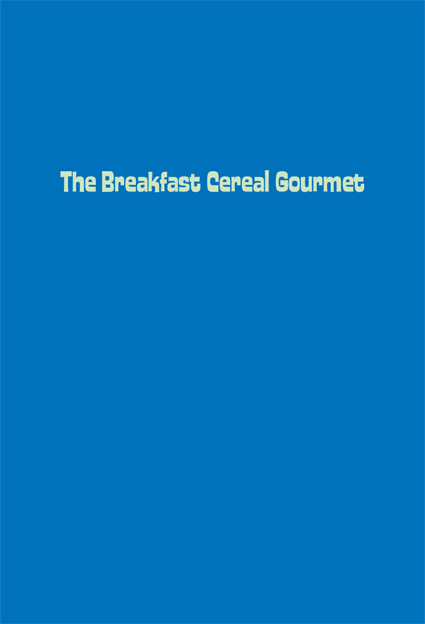
A HEALTHY START
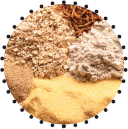
1830s
Dr. Sylvester Graham, a Pennsylvania Presbyterian minister (not an MD), appalled by the pork-and-beef heavy English-style breakfasts most Americans are eating, preaches the value of vegetarianism and good nutrition (and the evils of alcohol and caffeine) and in the process develops Graham flour and Graham crackers.
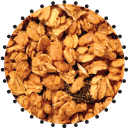
1863
Dr. James Jackson of Dansville, New York, purchases large quantities of Graham flour, bakes them in large sheets, then breaks them up, rebakes them, and breaks them up again to create a breakfast product that he names Granula.
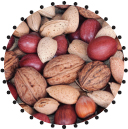
1887
Dr. John Harvey Kellogg, a follower of Grahams, Seventh Day Adventist and director of the Battle Creek Sanitarium (The San) in Battle Creek, Michigan, also develops a morning mix of baked and rebaked grains, and also calls it Granula. Word of his great new food item travels quickly, andsurprise, surprisehe is sued by Dr. Jackson. So Kellogg changes the name of his product to Granola. But slow down: While Granola is a menu staple at the sanitarium, Kellogg turns his attention to nuts, and never bothers to market the cereal.

1891
Enter Charles W. Post, a patient at the San, who leaves uncured, decides to opens his own health retreat, and concocts his own easier-to-chew version of Kelloggs Granola recipe. He does sell it commercially (thus making his mix the first packaged cold cereal product)and quite successfullyunder the name Grape Nuts.
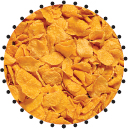
1894
William Keith Kellogg, brother to John and a manager at the San, attempts to salvage a batch of stale wheatmeal by grinding it. He discovers that when it is run through rollers, the wheatrather than coming out as a unified flat sheetcomes out as flakes. He roasts the flakes and serves them to his patients, who cant get enough of the new menu offering known as Granose. Several years later, Kellogg would repeat the same process using corn. Unable to convince John (who felt that blatant commerical ventures would compromise his integrity as a medical professional) that they should, like Post, sell their discoveries to grocery stores, he buys out his brothers share of the patents, forms the Kellogg Company, and in 1902 begins mass production of his first cereal. Foregoing any name that sounds too medicinal, he decides to simply call the product Corn Flakes.
Next page
